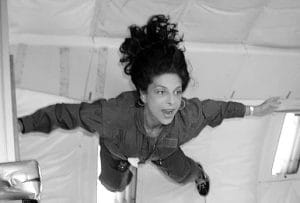After studying sociology at Harvard, and then getting a master’s in architecture at Yale University, Adams apprenticed with an architecture firm for two years before settling on her calling: she was a space architect, and got her dream job in the late 1990s working on NASA projects. It’s a weird environment for designers, since there’s no “up” or “down” in space. “You take gravity out of the equation and everything goes kablooey,” Adams said. “We have to help our astronauts force themselves to act as if things were normal, so in fact we don’t have that many options, and one of the biggest struggles is to figure out how to keep a complex life form that evolved in a particular environment functional, when essential components of that environment are gone.” Adams worked on modules for the International Space Station, crew cabins, Mars habitats, and was considered one of the first experts in spaceport planning: she helped design the Spaceport America Terminal Facility for the New Mexico Spaceport Authority (and its initial tenant, Virgin Galactic) — the world’s first commercial spaceport terminal.

But in the middle of all that, Adams never lost sight of home. “What I’m trying to do is to do this in as good a way as possible,” she said. “To do it gently, to do it well, and to take the things that we’re learning while figuring out how to do it… sustainably and apply them to the way we’re living here,” on Earth. “How could I not want to design for space?” she asked later. She didn’t get to go into space herself, but did experience weightlessness in a specially equipped airplane (photo). Adams died June 24, from cancer. She was 53.
